When it comes to cosmetic dentistry, there are several methods and materials which can be used to help obtain that “perfect” smile.
Tooth whitening treatments may be all that you truly need to improve the look of your teeth.
However whitening products will generally not work well for teeth that are stained due to tetracycline or teeth that are mainly gray or brown in color.
People who have teeth which are essentially yellow in color will benefit the most from whitening products. If you look at some of the marketing advertisements for whitening products, my guess is you will notice that most of the photos show people with teeth that are primarily yellow. White spots, multiple fillings on the front of the teeth or other anomalies may also not improve with whitening.
Therefore if you want (or need) to dramatically improve the shape, color and style of your teeth you may need to turn to dental veneers or dental bonding. Both procedures are used to improve the overall appearance of your smile by changing the size shape and or color of your teeth.
Both are typically considered restorative, cosmetic treatments. Both procedures can hide visible imperfections on your teeth and can give you the appearance of a flawless smile.
What Are Veneers?
Ever wonder how celebrities get those perfectly even, white teeth? Chances are, they’re wearing dental veneers. Veneers are thin pieces of porcelain that sit on the front layer of your teeth.
They can add length, change the shape and/or improve the color of your teeth. A single veneer can be placed individually to cover just one tooth if that is all that is required. However, if you want to improve the appearance of your entire smile, you may need to have a full set (6-8 teeth) of veneers so that all the teeth that show when you smile are the same size, color and “shape”.
Porcelain veneers are made in a dental laboratory by a dental technician/ceramist and they are custom crafted, fitted and color matched to your teeth (or made whiter if that is the desired result).
Although they can be placed directly on the teeth (as is the case with “Lumineers” or “no-prep veneers”) this will make the teeth thicker and may not be desirable aesthetically. Therefore it usually requires some adjustments or preparation of your natural teeth to allow for a minimum thickness of porcelain to cover the tooth underneath.There are 1-3 appointments required to plan the procedure before commencing treatment, however once that is done the actual process can often be done in 2-3 visits over a 2-3 week period.
Who Can Benefit Most From Veneers?
Veneers can be a good method to create a beautiful, flawless smile. They are generally meant for individuals with more severe stains, wear, minor rotations and minimal damage to their teeth.
If the teeth are too damaged or worn a full coverage crown may be a better solution (this can be aesthetically indistinguishable from a porcelain veneer). If your teeth are extremely rotated or crowded then orthodontic procedures will often be a more conservative and better method to dramatically improve your smile.
Your dentist will also need to check the general health of your teeth, gums as well as your bite to ensure that once the veneers are completed they will last as long as possible. You are a good candidate for veneers if you have:
- Severe stains and discoloration
- Cracked teeth
- Chipped teeth
- Large gaps in between your teeth
- Crooked teeth (mild to moderate)
- Teeth that overlap
- Worn teeth
What Is Dental Bonding?
Dental bonding is a general term to describe all processes whereby white fillings are applied to teeth. Most commonly, bonding is often understood as the process whereby a filling material is placed on the front surface of a tooth to change the size, shape, and color, much like a porcelain veneer. Dental bonding can be used to repair individual teeth or rebuild several teeth as well as create a uniform-looking smile.
It is perfect for those with a small irregularity they want to improve. Just like with veneers, the dentist will color match the bonding material to your neighboring teeth.
Who Can Benefit Most From Dental Bonding?
Dental bonding is perfect for minor fixes and discoloration. Dental bonding can be placed on the front of your teeth to cover cracks, discoloration, and chipped teeth. It can also be used to rebuild teeth that break if the damage is small to medium.
- Chips
- Cracks
- Minor stains
- Misshapen teeth
- Gaps
- Exposed roots from receding gums
Comparing Veneers To Dental Bonding
Veneers and dental bonding are very similar treatments. Both are used to improve the appearance of your teeth. Your choice of treatment depends on your specific needs, and it is best to discuss those with your dentist for a more individually tailored plan.
In general, porcelain veneers are seen as the more long-term, permanent option for smile repair, but dental bonding with white filling materials can also be used for tooth repairs as well as cosmetic enhancement.
Like anything, there are pros and cons to both dental veneers and dental bonding.
Pros Of Veneers:
Veneers create a beautiful, white, uniform smile almost immediately. Veneers can typically cover cracks, stains, poorly shaped teeth much more effectively than bonding. Porcelain will tend to stainless, and it is much stronger, making it less likely to chip or break. Nevertheless, even porcelain veneers have a limited lifetime of around 15 years.
Veneers are perfectly color matched to imitate the look and feel of your natural teeth. They are made to appear slightly translucent, just like natural teeth and are extremely lifelike.
Cons Of Veneers:
Veneers are permanent. A thin layer of your tooth enamel is removed which will be replaced with the porcelain. That is then bonded (fused) to the top layer of your tooth enamel. This makes veneers essentially an irreversible procedure as the teeth have been permanently altered.
However, I have never seen a situation where a person with veneers wanted to have them removed and go back to their pre-existing condition.
Veneers are also slightly more costly. This is because they are custom made (requiring a laboratory step) and can often take more time and skill with the preparations and placement of the veneers.
Pros Of Dental Bonding:
Bonding is typically done as a one appointment procedure so it often is a “faster” procedure than a porcelain veneer; which takes at least two appointments. If the extent of the cosmetic work required is minimal to moderate bonding is often less expensive than porcelain veneers.
However, in the case of a complete smile makeover, it may not be much less than veneers so be sure to ask your dentist for the cost of both options. If some of your bonding ever chips or breaks it is quick and easy to repair.
If taken care of properly, dental bonding can last for up to 10 years before it needs to be replaced.
Cons Of Dental Bonding:
One of the disadvantages to dental bonding is that the material is a composite resin. Therefore, it is not as strong as porcelain. This makes it easier to chip, and it is more porous, making it more prone to staining after several years of use.
The challenge of dental bonding is the aesthetic limitations of the material. It can be more difficult to mask very dark and discolored teeth. And the ability to get an excellent result depends a lot on your dentist’s artistry and ability to manipulate the materials intraorally in a way that is cosmetically as good as a porcelain veneer.
A single or a few teeth may be relatively simple, but an entire smile can be very challenging. For that reason, dental bonding may be almost as expensive as having porcelain veneers as it may take considerably more in clinic time and skills on the part of the dentist.
Ask Your Dentist Which Is Best For You
Both dental veneers and dental bonding are powerful cosmetic procedures that can dramatically change the appearance of your smile. If you are self-conscious about deep stains or have teeth that are cracked or chipped, ask your dentist about what procedure would be best for you.
At VCCID we would be happy to help assist you if you want to learn more about veneers and dental bonding. Call or come on in to schedule your consultation.



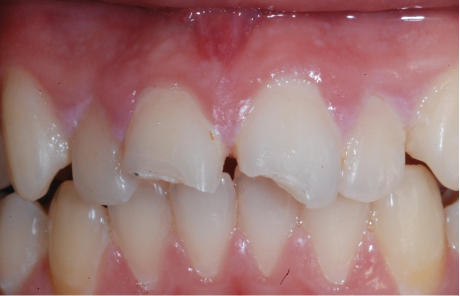


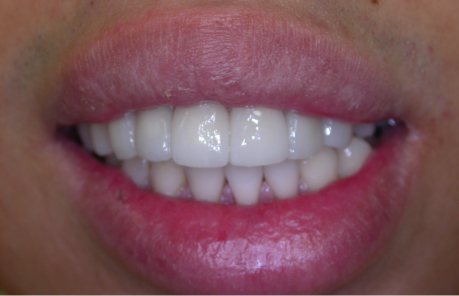

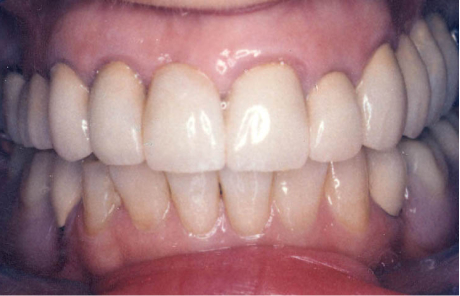
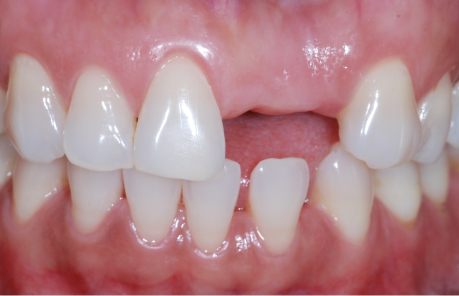
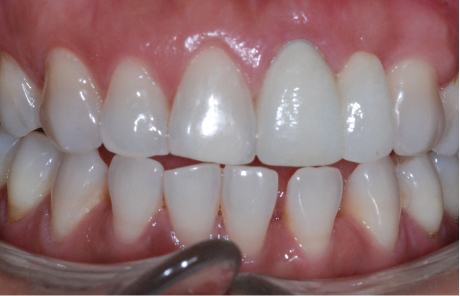


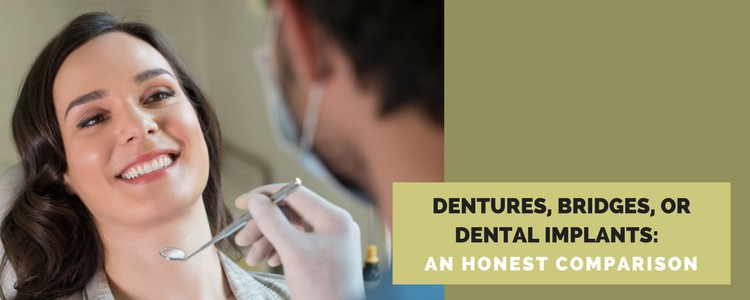



13 thoughts on “Veneers vs Dental Bonding”
This is an informative post and very well written by the author. From my experience, these are the five main reasons for crowns falling off. Also, be aware that more often than not, when a crown comes off, it is due to recurrent decay or some other breakdown. It is imperative to go to your dentist.
I have heard good things and bad things about both. Communicate accurately about what you don’t like about the way the porcelain veneers were done so that the technician can make the appropriate adjustments. Ask your dentist if he/she used a dedicated cosmetic dentistry lab or an ordinary dental lab that does almost everything. Believe it or not, some labs do better cosmetic work than others.
One of the best articles I’ve read on bonding and veneers. Very informative and non-biased. I’m having some bonding done on 1-2 teeth after I come out of braces and I think this is the right option for me and I feel good about it after reading your article.
Thanks for info!
your very welcome!
I am n my late 70’s and my teeth are wearing down. I had bondng done many years ago that lasted forever, but a recent bonding job started chipping off within months. As a result, my front teeth look worse than ever. The success and outcome of any dental procedure depends entirely on the dentist. My former dentist retired, thus the need to go elsewhere for what is one of the most important aspects of one’s appearance.
Hello Helen:
You have to keep in mind that at the time the original bonding was done, your bite may have been different. It may be that the pressure/forces on your teeth are different/greater than they were years ago, hence the bonding may not be as strong to withstand the chewing/functional forces.
Bonding can be a very challenging process between getting something that is aesthetic, functional, and “feasible” within your bite/pathways of function, as well as strong enough to last for a reasonable length of time. Certainly technique and dental experience can play a role…but I have also done bonding for patients where certain teeth continue to chip and it is the limitation of the material and the persons envelope of function that makes it challenging. In some cases it is better to use a stronger material such as porcelain.
Best to speak to your dentists about your concerns and see if 1. they understand why the bonding has been chipping and 2. what they can do to minimize it by either making changes to how it is done or choice of materials for certain teeth
Sincerely
Dr Balogh
Thanks for sharing this informative post!
An excellent article on veneers vs bonding! Thank you. Have two questions, if I may. Am in late 60’s, and have noticed bleaching doesn’t whiten my teeth as in the past. Do not smoke, if have a drink, it’s white wine. Tea drinker, but with cream. So am I right in assuming, Dr. Balogh, that teeth darken with age? And bleaching does not lighten older teeth?
Desire to ‘freshen’ up my looks, and my gut tells me a great smile is better than a facelift! Am trying to choose between composite resin bonding and porcelain veneers, but believe will go with the veneers after reading your informative article. Have seen about five different dentists, and the prices of the veneers vary widely. The one dentist am leaning towards is a large practice that does a lot of smile makeovers. Price wise, right in the middle. The two dentists have trained with a lab out in Las Vegas, and believe another lab on the west coast. Although live in eastern US, that is where the veneers will be created. Am sure they are many labs creating veneers, some better than others. What are your thoughts regarding where the veneers are made? One dentist does the actual veneers himself, but he is the most expensive, and his smile makeovers are equal to the pictures have seen from the others. Thank you for your response Dr. Balogh.
Hello Mary:
Yes unfortunately as we get older it is more difficult to whiten our teeth by “bleaching”. The colour of a tooth comes from the dentine layer below the enamel. This layer becomes thicker and often darker as we age, and the enamel above often tends to this due to erosion or abrasion over the years. Then in addition to that, teeth that are more yellow and uniform in colour will bleach reasonably well, however tech that have gray, brown or dark orange in colour do not bleach well at all. And if one has discolouration due to tetracycline stains (an antibiotic that used to be given to children) then bleaching will be to no avail.
Hope this helps. Sounds like you have done good research and discernment in finding the right dentist…blessings and best wishes.
Sincerely
dr Balogh
Do you need to have all existing teeth done or just the front most visable,i have three teeth that are missing from years ago they are not seen when I smile or otherwise.
HI Phil:
If your back teeth are ok wrt function and bite then there Amy not be any need to do any work on the back teeth
Sincerely
Dr Balogh
The year: ~1990. I had some bonding done on the biting surfaces of my two upper (middle) front teeth. My dentist noticed they looked like I had been drinking “too much coke.” (No; only the occasional soft drink.) Anyway; they appeared a bit jagged. He bonded the two surfaces, and they looked very; very nice. Quite natural. Well–that was almost thirty years ago. They are as good today as they were then. Perhaps I’m an “outlier.” (A rare case.) Mine have lasted three times the average.